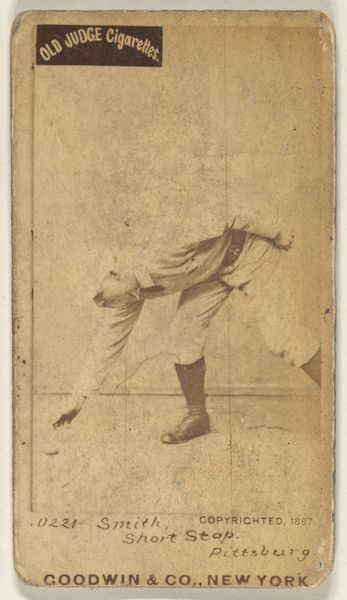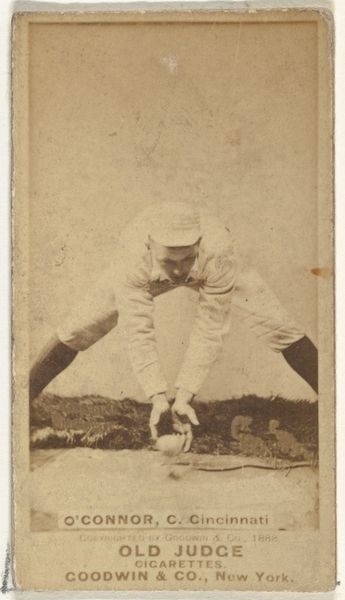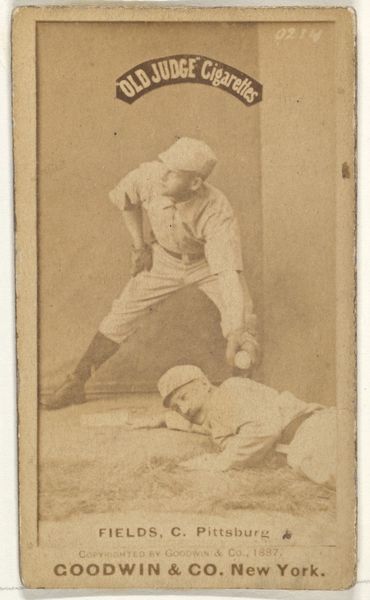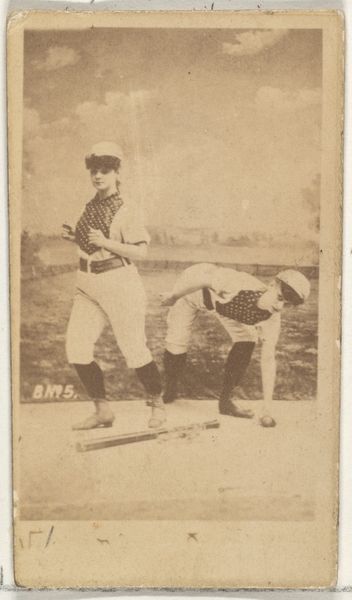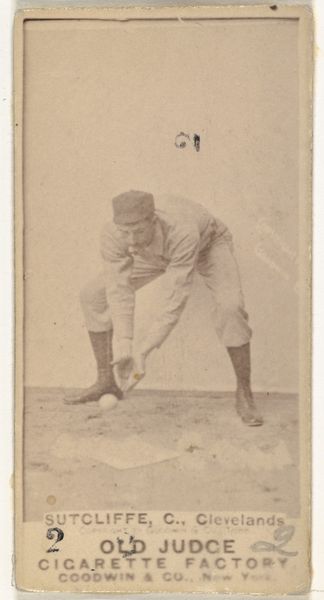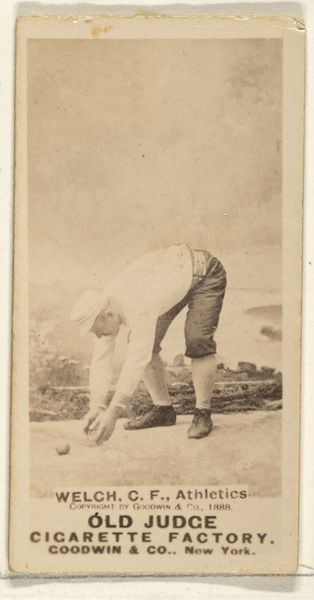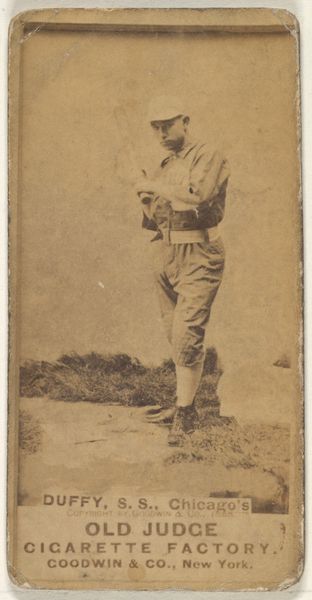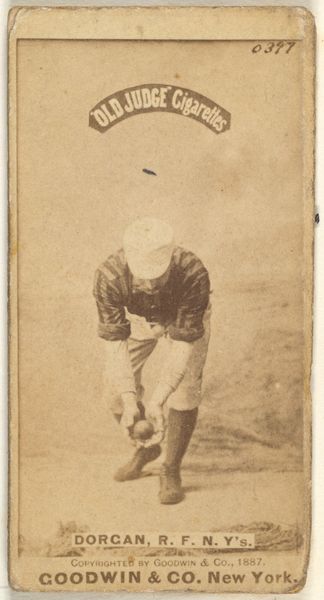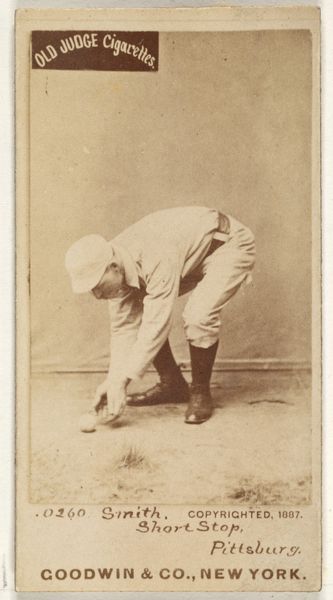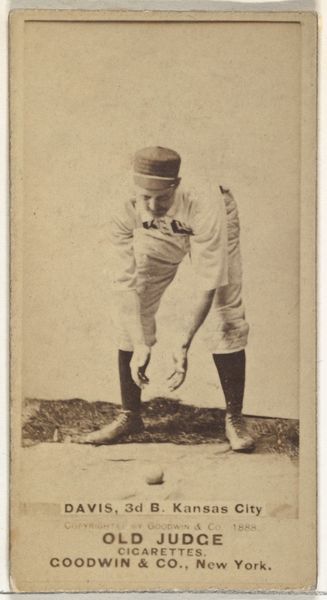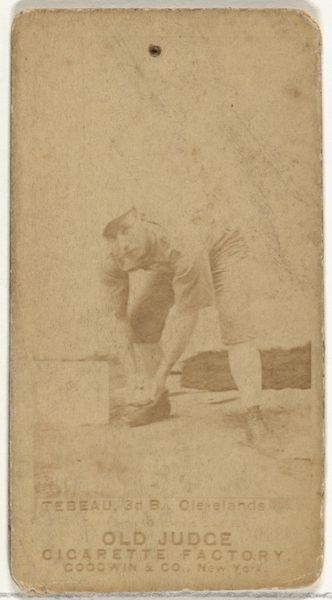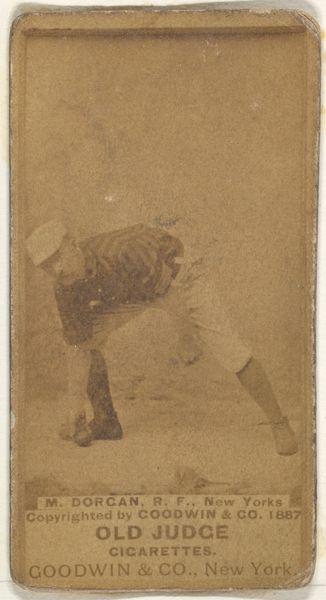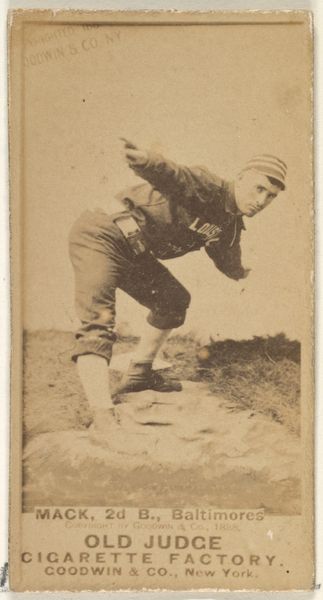
Charles Andrew "Duke" Farrell, Catcher, Chicago, from the Old Judge series (N172) for Old Judge Cigarettes 1888
0:00
0:00
drawing, print
#
portrait
#
photo of handprinted image
#
drawing
#
aged paper
#
toned paper
#
light pencil work
#
ink paper printed
# print
#
pencil sketch
#
baseball
#
coloured pencil
#
men
#
watercolour bleed
#
watercolour illustration
#
athlete
#
watercolor
Dimensions: sheet: 2 11/16 x 1 3/8 in. (6.9 x 3.5 cm)
Copyright: Public Domain
Curator: Let's turn our attention to this intriguing card featuring Charles Andrew "Duke" Farrell, a catcher for Chicago. It’s from the "Old Judge" series (N172) dating back to 1888, produced by Goodwin & Company as a promotional item for Old Judge Cigarettes. It's a print, residing here at the Metropolitan Museum of Art. Editor: Okay, my first thought? Nostalgia, big time! The sepia tones make it feel like a faded memory, or perhaps the beginning of something monumental. I get the distinct sense of an intimate moment captured. He seems frozen mid-action, crouched, totally focused on the baseball... on his game. Curator: The context of these cards is crucial. These weren't just portraits; they were advertising tools, strategically distributed to boost the popularity of a product, and by extension, a certain lifestyle. They reflect the rise of consumer culture and the increasing commercialization of sport in America at the time. Editor: Right, cigarettes and baseball! Ah, those innocent vices of a bygone era. Still, doesn't it strike you how modern it feels? Okay, maybe that's an exaggeration, but think about how advertising then and now is designed to do the same thing. Creating these cultural associations between objects and moments in life... Curator: Indeed. These cards also speak volumes about the construction of celebrity and the idealization of athletes. It also gives visibility to working class sports figures at the time. Beyond aesthetics, it invites us to consider who is deemed worthy of portrayal and the systems of power that influence these choices. Editor: Makes me think about who decides whose faces go where… then and now. I am interested in its tonal composition as well: the sepia seems to wrap him in this layer of respectability but also something that seems manufactured and distant… even isolating, Curator: Absolutely, and let's remember these cards were mass-produced. The mechanics of reproduction—lithography, the choices made by the production team—played a pivotal role in shaping public perception and the collective cultural memory around figures like Farrell. The choices that went into image also gave an outsized amount of power to certain individuals to define and promote ideologies, social or ethical standards, and political messages. Editor: As we walk away from it, though, I hope the visitors will consider this less like "a faded baseball card," and more as this small time capsule that contains all sorts of ideas. Things like class, advertising, sportsmanship, you know… all of these different dimensions, still very active and playing out to this day.
Comments
No comments
Be the first to comment and join the conversation on the ultimate creative platform.
